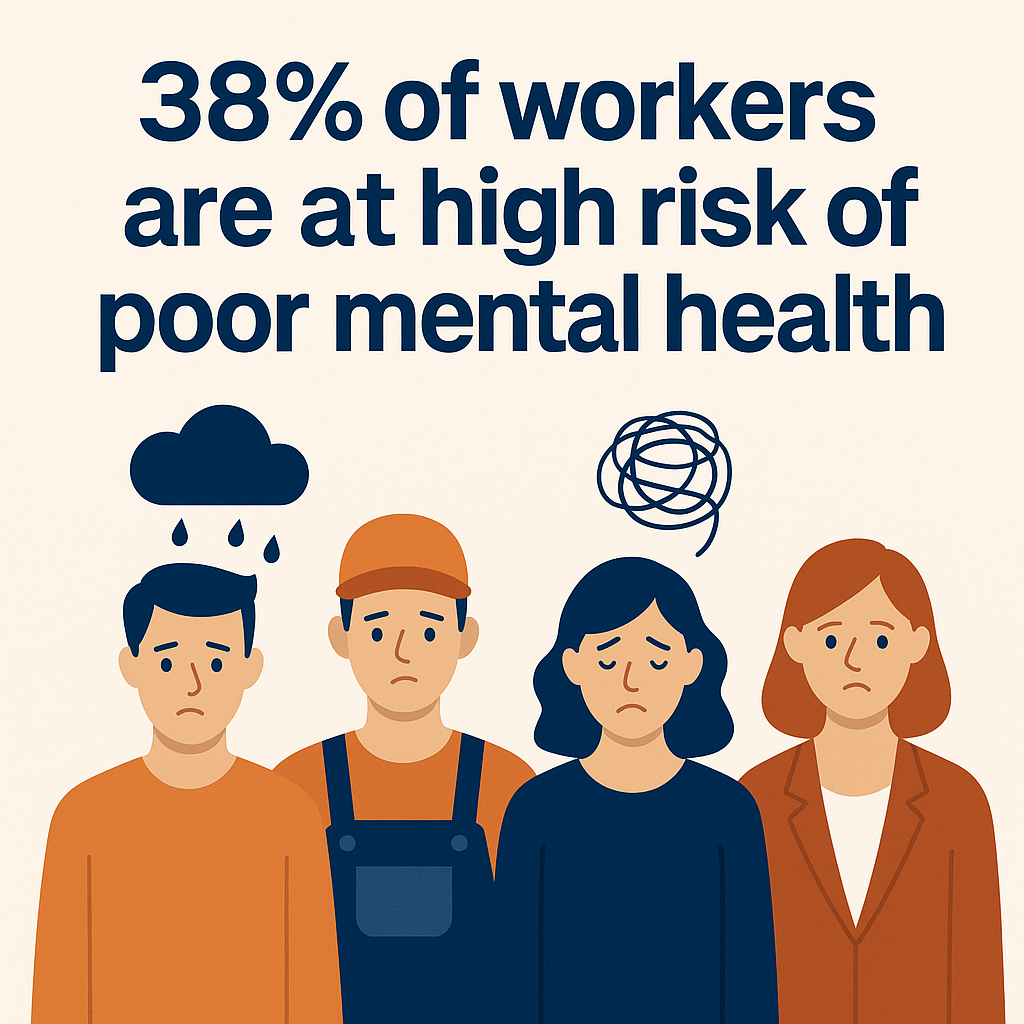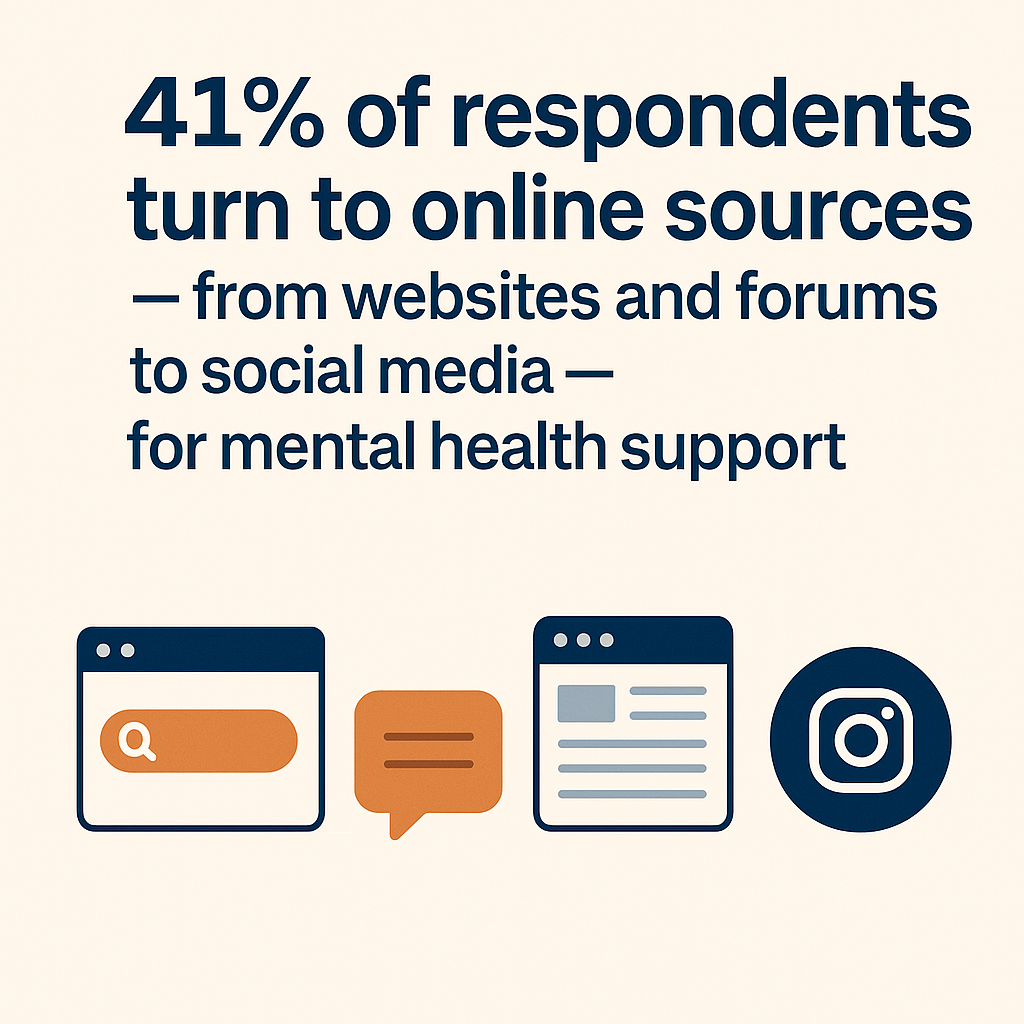Written by Katre Kaarenperk, co-founder of Mentastic
Mental health has become one of the most pressing workplace challenges of our time. It’s no longer just a wellness perk or a checkbox in HR policies — it is a critical factor shaping productivity, retention, and overall business performance. And yet, the numbers show a troubling gap between what employees need and what organizations provide.
According to the AXA Mind Health Report 2025, only 47% of workplaces have a formal mental health policy, even though one in three people globally experience a mental health condition on a daily basis. Work itself is often cited as a primary source of stress. When nearly a third of the global workforce struggles every day, this is no longer a side issue — it’s a crisis.
The Rising Cost of Ignoring Mental Health.
In Europe, the ETUI survey highlights that 38% of workers are at high risk of poor mental health. This spans industries and roles, from high-stakes healthcare to everyday office jobs. Meanwhile, in the United States, the 2025 NAMI Workplace Mental Health Poll reveals that 42% of employees fear their career would suffer if they spoke openly about their mental health struggles. That culture of silence creates a vicious cycle: employees suffer in isolation, issues go unaddressed, and organizations bear the hidden costs of burnout, absenteeism, and disengagement.
The human cost is immense, but so is the business impact. Anxiety, depression, and stress are now leading causes of lost productivity worldwide. Companies that fail to act are not just failing their people — they are also undermining their competitiveness.

The ROI of Proactive Support.
The encouraging news is clear: companies that actively support mental health see less burnout, depression, and anxiety (Mind Share Partners, 2025). When organizations foster psychological safety and normalize conversations about mental well-being, employees respond with higher engagement, loyalty, and performance.
Successful organizations: – Normalize conversations about mental health at all levels of leadership. – Offer digital and in-person support that adapts to individual needs. – Train managers to spot early warning signs of burnout or distress. – Move from reactive to preventive support, including flexible work models, proactive check-ins, and digital-first tools.
These practices aren’t just about compassion — they are strategic investments with measurable returns.
The Digital Shift: Where Employees Seek Help.

The way people seek support is also evolving. The AXA Mind Health Report found that 41% of respondents turn to online sources — from websites and forums to social media — for mental health support. Younger employees, in particular, are more likely to seek digital help and show a higher willingness to engage with online tools. Women and younger people are also disproportionately affected by mental health challenges, making digital accessibility an equity issue as much as a health one.
This shift underlines the need for science-backed, digital-first mental health tools that go beyond generic wellness content. Employees want real-time, personalized, and data-driven support — not just another meditation app.
Mentastic: A Case for Intelligent Prevention.
One emerging example is Mentastic, the digital companion designed to predict and prevent mental health issues. The smart intelligence synthesizes fragmented signals from wearables, wellbeing apps, and training tools into a coherent mental state model that users can actually understand. It adapts continuously to individual patterns and responses, highlights meaningful trends, and suggests practical changes. And last but not least, Mentastic generates personalized, actionable insights by combining advanced AI with professional psychological knowledge.
Mentastic doesn’t just react when stress is already present. It integrates data from multiple sources, including wearables, personal input (even such as genetic predispositions), behavior patterns, sleep, mood, and digital habits, transforming it into one continuous and intelligent stream of personalized feedback and analysis.
In a world where 41% of people already turn to online sources for help, tools like Mentastic demonstrate how technology can become a trusted partner for preventive mental health. This isn’t about replacing human care, but about providing continuous, adaptive support that aligns with employees’ evolving needs.
Addressing Inequities: Women and Youth at Higher Risk.
The AXA report also highlights a stark reality: women and younger people report significantly higher levels of mental health distress. These groups also tend to use digital tools more readily. That makes it imperative for organizations to adopt inclusive, tech-enabled strategies that meet the specific needs of vulnerable demographics. Ignoring these differences doesn’t just harm individuals — it perpetuates workplace inequities.
From Policy to Practice.
Having a policy on paper is not enough. The question every leader should ask is: Does our organization live it out in practice? Key indicators include: – A clear, visible mental health strategy – Awareness of available resources among employees – Managers trained to respond with empathy – Integration of digital and preventive tools into everyday workflows
If the answer is no to any of these, the company is behind the curve.
The Future: Preventive, Digital, Inclusive.
The workplace of the future will not treat mental health as an afterthought. It will be preventive, digital, and data-driven. Employees will have access to real-time insights, adaptive interventions, and proactive support — helping them thrive, not just survive.
Companies like Mentastic are paving the way for this future by making mental well-being continuous, personalized, and predictive. For organizations, the choice is simple: adapt now, or face mounting costs in both human and business terms.
Because at the end of the day, mental health is business health.
